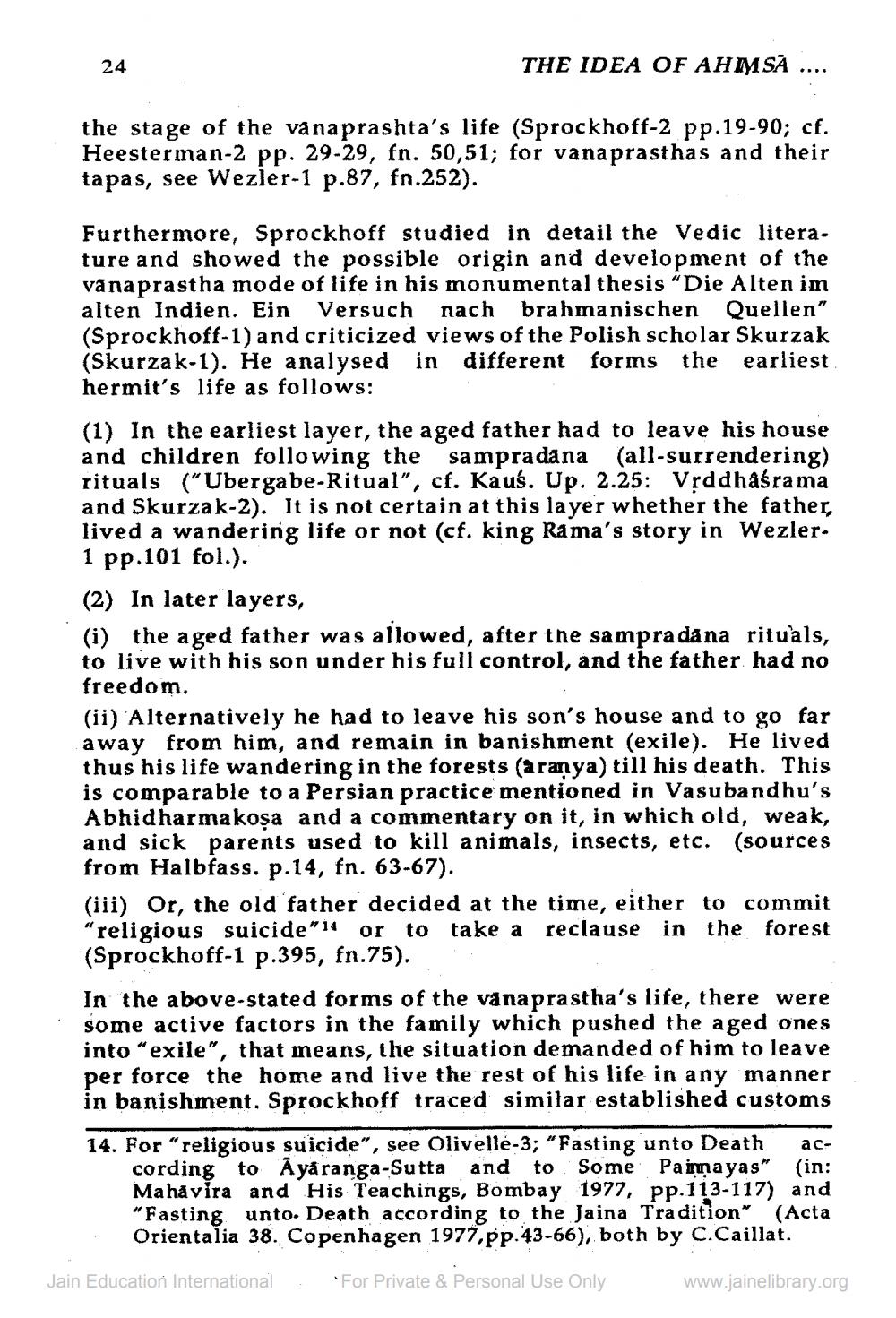________________
24
THE IDEA OF AHMSA ....
the stage of the vanaprashta's life (Sprockhoff-2 pp.19-90; cf. Heesterman-2 pp. 29-29, fn. 50,51; for vanaprasthas and their tapas, see Wezler-1 p.87, fn.252).
Furthermore, Sprockhoff studied in detail the Vedic literature and showed the possible origin and development of the vanaprastha mode of life in his monumental thesis "Die Alten im alten Indien. Ein Versuch nach brahmanischen Quellen" (Sprockhoff-1) and criticized views of the Polish scholar Skurzak (Skurzak-1). He analysed in different forms the earliest hermit's life as follows: (1) In the earliest layer, the aged father had to leave his house and children following the sampradana (all-surrendering) rituals ("Ubergabe-Ritual", cf. Kaus. Up. 2.25: Vưddhaśrama and Skurzak-2). It is not certain at this layer whether the father, lived a wandering life or not (cf. king Rama's story in Wezler. 1 pp.101 fol.). (2) In later layers, (i) the aged father was allowed, after the sampra dana rituals, to live with his son under his full control, and the father had no freedom. (ii) Alternatively he had to leave his son's house and to go far away from him, and remain in banishment (exile). He lived thus his life wandering in the forests (aranya till his death. This is comparable to a Persian practice mentioned in Vasubandhu's Abhidharmakosa and a commentary on it, in which old, weak, and sick parents used to kill animals, insects, etc. (sources from Halbfass. p.14, fn. 63-67). (iii) Or, the old father decided at the time, either to commit "religious suicide" 14 or to take a reclause in the forest (Sprockhoff-1 p.395, fn.75).
In the above-stated forms of the vanaprastha's life, there were some active factors in the family which pushed the aged ones into "exile", that means, the situation demanded of him to leave per force the home and live the rest of his life in any manner in banishment. Sprockhoff traced similar established customs
14. For "religious suicide", see Olivelle-3; "Fasting unto Death ac
cording to Āyåranga-Sutta and to Some Paimna yas" (in: Mahavira and His Teachings, Bombay 1977, pp.113-117) and "Fasting unto. Death according to the Jaina Tradition" (Acta Orientalia 38. Copenhagen 1977, pp. 43-66), both by C.Caillat.
Jain Education International
•For Private & Personal Use Only
www.jainelibrary.org




